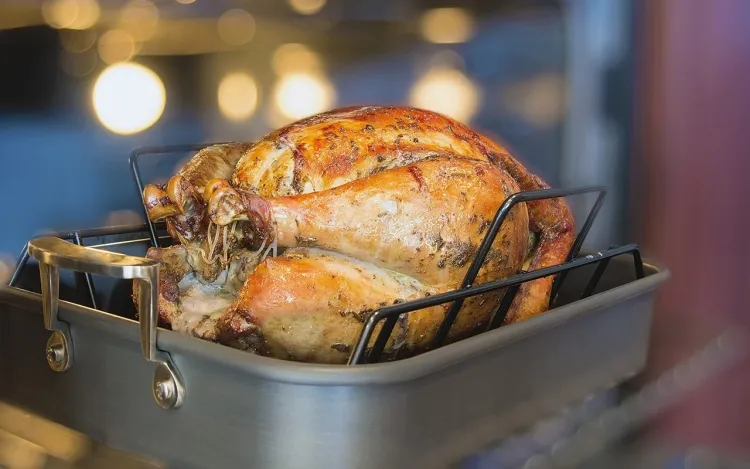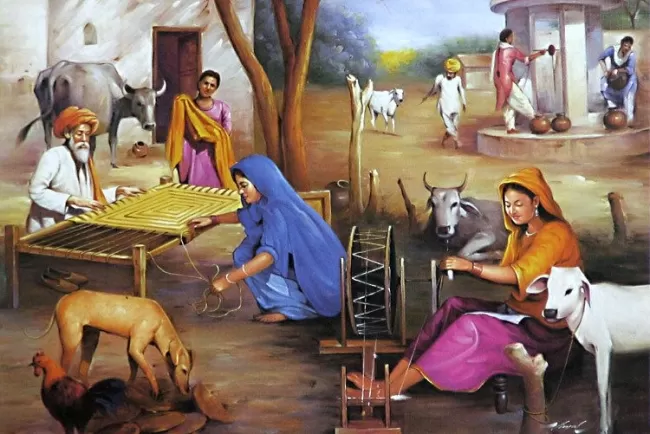Roasting Pan and Its Uses...!!!
A roasting pan is a versatile and valuable tool in any kitchen, allowing you to prepare large meals with ease. Whether you're roasting meats, baking casseroles, or creating one-pan meals, a roasting pan offers convenience and excellent results. With proper care and maintenance, your roasting pan will serve you well for many years, making it a worthwhile addition to your culinary arsenal.

roasting pan is an essential kitchen tool designed for cooking large cuts of meat, poultry, and vegetables. Its size, sturdy construction, and ability to withstand high temperatures make it ideal for roasting, baking, and braising.
Features of a Roasting Pan
-
Size and Shape:
-
Roasting pans are typically large and come in rectangular or oval shapes. The size you choose depends on your cooking needs and the size of your oven. Most are designed to accommodate large cuts of meat, such as turkeys, roasts, and hams.
-
-
Material:
-
Roasting pans are made from materials that can withstand high temperatures, such as stainless steel, carbon steel, aluminum, and enameled cast iron. Stainless steel is favored for its durability and even heat distribution, while enameled cast iron offers excellent heat retention.
-
-
Handles:
-
Sturdy handles on either side of the pan make it easy to lift and transport, even when filled with heavy food. Some pans feature riveted handles for added strength and stability.
-
-
Rack:
-
Many roasting pans come with a removable rack that elevates the food, allowing air to circulate and ensuring even cooking. The rack also helps drain excess fat and juices away from the food.
-
-
Depth:
-
Roasting pans have deep sides to prevent spills and splatters. The depth also allows for adding liquids, such as broth or wine, for basting or creating a flavorful base for gravy.
-
Benefits of Using a Roasting Pan
-
Even Cooking:
-
The large surface area and sturdy construction of a roasting pan ensure even cooking, preventing hot spots that can lead to unevenly cooked food.
-
-
Versatility:
-
Roasting pans are versatile and can be used for various cooking methods, including roasting, baking, braising, and broiling. They are ideal for preparing large meals, making them indispensable for holiday dinners and family gatherings.
-
-
Capacity:
-
The spacious design of a roasting pan allows you to cook large cuts of meat, whole poultry, and an array of vegetables simultaneously. This makes it convenient for preparing one-pan meals.
-
-
Flavorful Results:
-
Roasting pans help achieve beautifully browned and flavorful results. The elevated rack allows fat and juices to drain away, resulting in crispier skin and more concentrated flavors.
-

Uses of a Roasting Pan
-
Roasting Meats:
-
Roasting pans are perfect for cooking large cuts of meat, such as turkey, chicken, beef roasts, pork loin, and lamb. The elevated rack ensures even cooking and allows the meat to develop a crispy, golden exterior.
-
-
Baking:
-
Roasting pans can also be used for baking casseroles, lasagna, and other large dishes. Their spacious design makes them ideal for feeding a crowd.
-
-
Braising:
-
Braising involves cooking meat slowly in liquid to tenderize it and enhance its flavor. Roasting pans are suitable for braising large cuts of meat, such as brisket, short ribs, and pork shoulder. The deep sides and durable construction allow for even heat distribution and moisture retention.
-
-
Roasting Vegetables:
-
Roasting pans are excellent for cooking a variety of vegetables, such as potatoes, carrots, Brussels sprouts, and squash. The large surface area ensures that the vegetables are spread out evenly, allowing them to roast to perfection with a caramelized exterior.
-
-
Making Gravy:
-
After roasting meat, the drippings and browned bits left in the pan can be used to make delicious homemade gravy. Simply deglaze the pan with broth or wine, and whisk in flour or cornstarch to thicken the sauce.
-
-
Broiling:
-
Some roasting pans are broiler-safe and can be used to broil foods, such as steaks, fish, and vegetables. The high heat of the broiler creates a deliciously crispy crust.
-
-
One-Pan Meals:
-
Roasting pans are perfect for creating one-pan meals, where the meat and vegetables cook together in the same pan. This method saves time and reduces the number of dishes to clean.
-
-
Serving:
-
Roasting pans can double as serving dishes, making it easy to transport and present your meal directly from the oven to the table.
-
Care and Maintenance of a Roasting Pan
-
Cleaning:
-
Clean your roasting pan after each use to prevent the buildup of grease and food residue. Stainless steel and enameled cast iron pans can be cleaned with warm soapy water and a soft sponge. Avoid using abrasive cleaners that can damage the surface.
-
-
Preventing Sticking:
-
To prevent food from sticking, lightly grease the pan with oil or cooking spray before use. For stubborn stains, soak the pan in warm soapy water and use a non-abrasive scrubber.
-
-
Storage:
-
Store your roasting pan in a dry place to prevent rust and damage. Ensure the pan is completely dry before storing it to maintain its longevity.
-
A roasting pan is a versatile and valuable tool in any kitchen, allowing you to prepare large meals with ease. Whether you're roasting meats, baking casseroles, or creating one-pan meals, a roasting pan offers convenience and excellent results. With proper care and maintenance, your roasting pan will serve you well for many years, making it a worthwhile addition to your culinary arsenal.
What's Your Reaction?

















